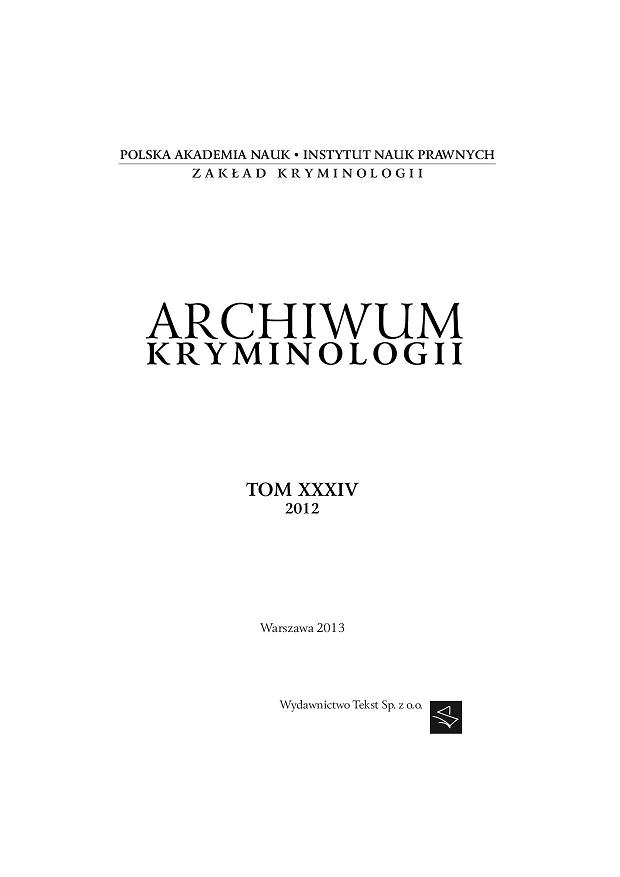Przestępczość w Polsce do roku 2020. Wyniki alternatywnych scenariuszy instytucjonalnych i środowiskowych uwarunkowań przestępczości
Crime in Poland before 2020. Results of alternative scenarios of institutional and enviromental conditioning of crime
Author(s): Waldemar FlorczakSubject(s): Law, Constitution, Jurisprudence
Published by: Instytut Nauk Prawnych PAN
Keywords: CRIME; PENAL POLICY;
Summary/Abstract: This article presents assumptions and results – along with their exhaustive discussion – of a middle-term crime forecast and its institutional and environmental crime conditioning obtained with a simulation version of WF-CRIME model for Poland for 2012-2020 Moreover, the article presents assumptions and results of two simulation scenario groups which assume realistic changes in current penal policy and environmental conditioning of crime. As for penal policy two cases were analysed: an increase of law enforcement sector (“tightening” scenario) and its decrease (“loosening” scenario) in comparison with the base solution (forecast). In the context of environmental conditioning of crime also two scenarios were drafted – “acceleration” and “deceleration” – in which activity of economic environment is a broadly understood delimitation meta-factor. All analysed scenarios are characterised by realistic assumptions and thus the results should not be considered only in the terms of purely academic discourse of experiment. Presentation of analyses results was preceded by a brief discussion of data sources, applied methodology and the structure of relations between crime and all links of law enforcement system which create simulation system of WF-CRIME model. Appendices enable the reader an independent evaluation of credibility of used data and to track the structure of relations of the system. Based on the performed analysed one can draw a number of conclusions of general nature. First, the possibilities of crime destimulation with the use of institutional measures are very limited. Decrease in general number of crimes in following penal policy toughening is not impressive. Disproportional increase in funds for certain links of the law enforcement system gives a certain chance to increase effectiveness of the whole system: greatest in funding of the judiciary, secondly for public safety. In the light of multiplier and scenario analyses outcomes, directing additional funds to penitentiary system is ineffective, unless its aim is to increase the number of places in existing prisons. Second, environmental factors – external from the point of view of law enforcement system but (at least a part of them) in the set of decisive / quasi-decisive variables from macroeco-nomic point of view - influence crime to a much greater degree than institutional measures. Among these factors, the key role falls to average real salary and economic disparity. Quick economic increase which does not happen at the cost of increase of socioeconomic disparity seems the concise formula for long-term effective crime control. To use metaphor from medi-cine, shaping an anti-criminogenic environment is a treatment of the source, not a treatment of symptoms – the latter can be applied to acting on crime by institutional measures.
Journal: Archiwum Kryminologii
- Issue Year: 2012
- Issue No: XXXIV
- Page Range: 427-480
- Page Count: 54
- Language: Polish

